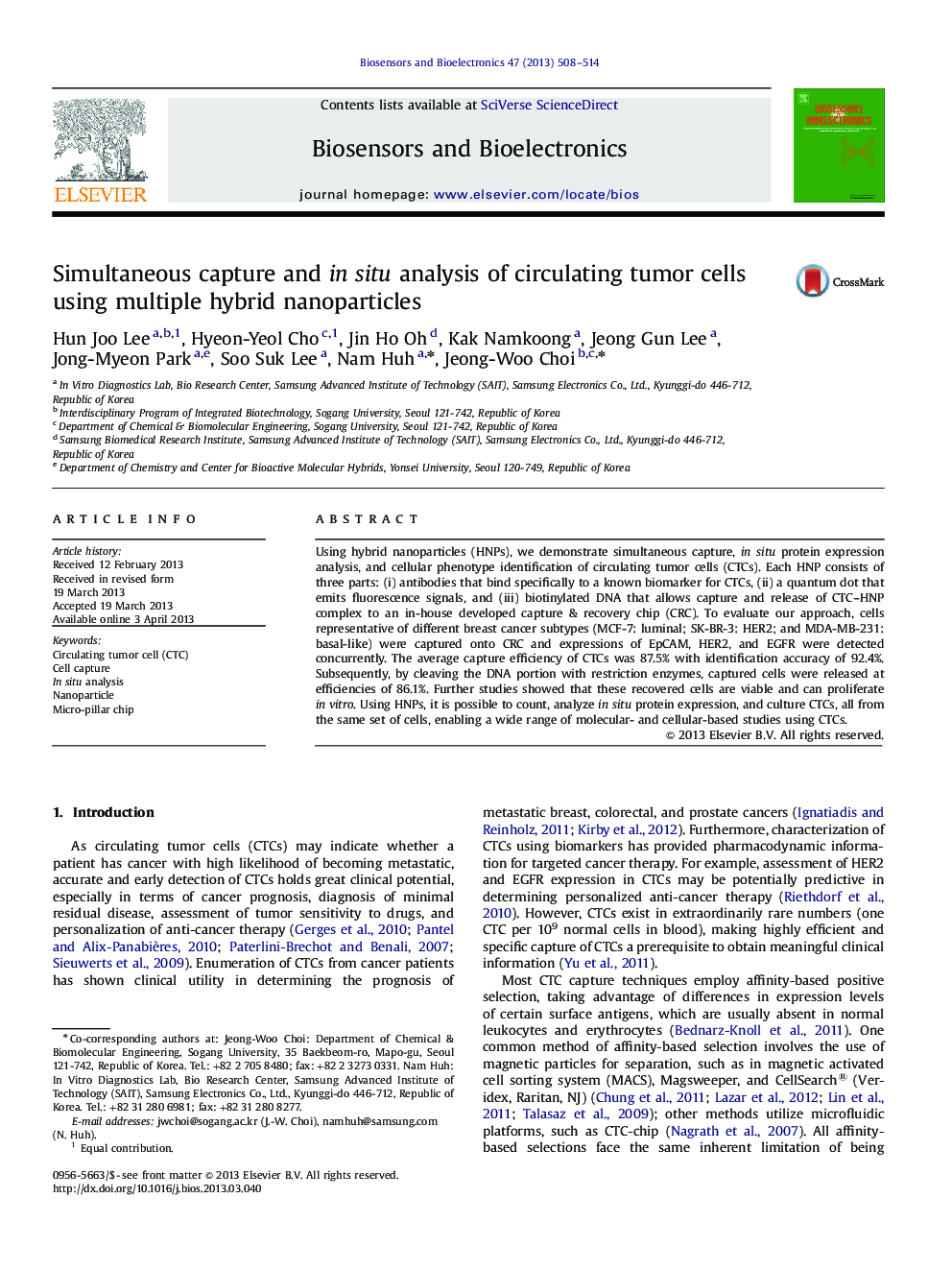| Article ID | Journal | Published Year | Pages | File Type |
|---|---|---|---|---|
| 867003 | Biosensors and Bioelectronics | 2013 | 7 Pages |
•HNPs for capture, protein expression analysis, and phenotyping of CTCs were fabricated.•3 kinds of functions of HNPs are working simultaneously on capture & recovery chip (CRC).•Various kinds of CTCs were successfully captured and analyzed by HNPs on CRC.•Captured CTCs were released by restriction enzyme and cultured under in vitro condition.
Using hybrid nanoparticles (HNPs), we demonstrate simultaneous capture, in situ protein expression analysis, and cellular phenotype identification of circulating tumor cells (CTCs). Each HNP consists of three parts: (i) antibodies that bind specifically to a known biomarker for CTCs, (ii) a quantum dot that emits fluorescence signals, and (iii) biotinylated DNA that allows capture and release of CTC–HNP complex to an in-house developed capture & recovery chip (CRC). To evaluate our approach, cells representative of different breast cancer subtypes (MCF-7: luminal; SK-BR-3: HER2; and MDA-MB-231: basal-like) were captured onto CRC and expressions of EpCAM, HER2, and EGFR were detected concurrently. The average capture efficiency of CTCs was 87.5% with identification accuracy of 92.4%. Subsequently, by cleaving the DNA portion with restriction enzymes, captured cells were released at efficiencies of 86.1%. Further studies showed that these recovered cells are viable and can proliferate in vitro. Using HNPs, it is possible to count, analyze in situ protein expression, and culture CTCs, all from the same set of cells, enabling a wide range of molecular- and cellular-based studies using CTCs.
Graphical abstractFigure optionsDownload full-size imageDownload as PowerPoint slide
